Bern pays homage to a bitter enemy
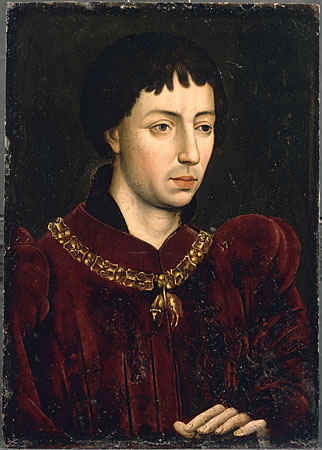
A man who vowed to wipe the "brutish" Swiss from the face of the earth is the focus of a sumptuous exhibition in Bern's Historical Museum.
As it turned out, Charles the Bold, Duke of Burgundy (1433-77), would have done better not to tangle with that particular enemy.
Every German-speaking schoolchild in Switzerland knows how he lost “Gut”, “Mut” and finally “Blut” – his goods, courage and blood – at the three battles he fought with the Swiss in 1476-7.
Charles’s “goods”, seized after the Battle of Grandson, were one of the richest war booties in history. His tapestries are still the centrepiece of the Bern museum’s collection.
But much of the rest has been scattered and lost, cut up or melted down. Perhaps not surprising then that Charles regarded the Swiss as “brutish”.
“Switzerland never had a courtly culture,” art historian Elke Jezler of the museum told swissinfo, explaining why the victors often failed to appreciate what they had seized.
“Many of the troops had never seen silver; they thought his plate was tin.” There are stories of peasants throwing away priceless jewels, taking them for coloured glass.
“The Swiss view Charles from the perspective of the winning side. Burgundy is known because of the booty, but much less for its cultural achievements.”
Out to impress
The exhibition aims to put this right. Burgundy was a cultural powerhouse in the Europe of the time, and the splendour of Charles’ court bedazzled even his contemporaries.
A highpoint of the exhibition is the display of items from the meeting in Trier between Charles and the Holy Roman Emperor, Frederick III, in 1473. Although only a duke, the ambitious Charles wanted Frederick to make him a king so he could ultimately succeed to the imperial throne – an aim that he failed to fulfil.
To achieve his ends he set out to impress. Visitors can admire a reconstruction of his throne, with the original backcloth and canopy, as well as examples of the kind of rich tableware and ornate textiles he took with him.
Contemporary records show that he spent nearly £40,000 – a fortune at the time – on clothing for his entourage, and went to Trier with an army of 6,000 men – and a tame lioness.
Artistic developments
Although Charles loved display for its own sake, and for the kudos it brought him, he was a pious man and a patron of the arts, which flourished during his reign. Some of the major artists of the time, including Hans Memling and Rogier van der Weyden, were active at his court, and he commissioned numerous works both for himself and for the church.
But it was not only the court which encouraged the arts. Both the cities and private individuals also played a role, and examples from all three are on display.
One striking exhibit is an altarpiece painted by Memling for the rich merchant Willem Moreel of Bruges. It features portraits of Moreel and his family and the background is a masterly example of 15th century Flemish landscape painting.
“We wanted to show how the different artistic genres and artistic taste influenced each other,” says Jezler. Gestures are rendered similarly in carvings and paintings; almost identical pictures occur in embroideries and tapestries, for example.
“Items that are illustrated in some of the artworks are also on display. For example, we have a real purse here which is almost exactly the same as one worn by a character in one of the tapestries.”
Illuminated manuscripts
Manuscript illumination was another highpoint of Burgundian culture. Visitors can leaf through a facsimile of Charles the Bold’s illuminated prayer book on a screen, but they can also see the original and examples of other exquisite devotional books.
Indeed, the original impulse for the exhibition came from the Faksimile publishing house in Lucerne, which was reproducing the prayer book now owned by the Getty Museum in Los Angeles. It suggested that the museum might like to present the facsimile along with their tapestries.
Having accepted the idea, the museum decided to go further and to try to borrow the original, but realised that the owners would be more likely to agree if other high-profile lenders were also involved.
In consequence, it has now put together what it believes to be “the most important exhibition on the history of European art ever shown in Switzerland”.
Charles at war
Charles spent much of his time waging war, and this aspect of his personality is not forgotten.
There are the remains of weapons and chain mail excavated from the sites of some of Charles’ battles, including Lake Murten, where many of his soldiers drowned when pursued by the victorious Swiss.
At the other end of the scale are examples of sumptuous plate armour made by Milanese craftsmen. One of the highlights of the exhibition is a huge knight wearing a suit made for Frederick III, and mounted on an equally well protected horse.
Charles’s family, his personality, his politics – and his fatal clash with the Swiss and their allies – are all explained. Maps and animations guide the visitor through the complexities of Burgundian history.
The superb paintings, sculptures, tapestries, jewelry, gold and silver plate, magnificent textiles, ceremonial weapons and armour reflect the true splendour of Burgundy, which collapsed in 1477.
“This is the first time these items have been seen together since Charles’s death,” Jezler commented.
swissinfo, Julia Slater
Charles the Bold (1433-77) was the last duke of Burgundy.
King John II of France had given the dukedom to his youngest son, Philip the Bold in 1363. Philip was Charles’s great grandfather.
The original territory of Burgundy was in eastern France, but the dukes subsequently amassed more territory – largely by marriage – including much of present day Belgium and the Netherlands, and became serious rivals to France.
Charles the Bold wanted to link his patchwork domains: what is now northwestern Switzerland lay in the way.
He did not like cities, such as those of the Swiss Confederation, which governed themselves and owed allegiance only to the Holy Roman Emperor.
Charles had only one child, Mary of Burgundy.
He arranged for her to marry Maximilian of Habsburg, son of Emperor Frederick III. The marriage took place after his death.
When Charles was killed in the Battle of Nancy, the king of France took back the lands that were part of France, while the remainder went to Mary. This gave the Low Countries to the Habsburgs.
Mary’s son Philip married the heiress to the Spanish throne. The house of Habsburg ruled Spain until 1700.
The Habsburgs were the ruling house of Austria until the end of World War I.
The Charles the Bold exhibition runs at Bern’s Historical Museum from April 25 to August 24.
It includes items lent by leading museums in Belgium, Austria, the US, Britain and France as well as Switzerland.
The exhibits are explained in English as well as in German and French.
A number of accompanying events are planned, including a mediaeval show to run from July 30 to August 10.
The museum is open on Tuesday to Friday from 10am to 8pm, and on Saturday and Sunday from 10am to 5pm.
The exhibition will also be seen in the Groeningemuseum in Bruges, Belgium in 2009.

In compliance with the JTI standards
More: SWI swissinfo.ch certified by the Journalism Trust Initiative
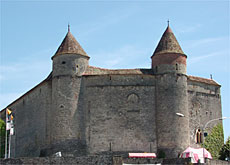
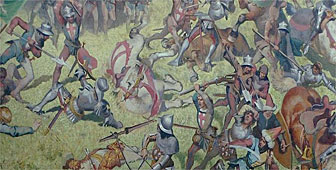
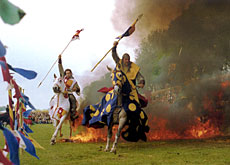
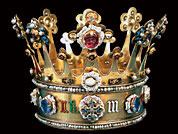
You can find an overview of ongoing debates with our journalists here. Please join us!
If you want to start a conversation about a topic raised in this article or want to report factual errors, email us at english@swissinfo.ch.